Today we’re going to find out how long it takes to charge the Tattu 4s 1800mah 75c and what the real world flight time is, in comparison to 1300 mAh batteries which are more common for racing drones.
When it comes to racing quadcopters, flight time is not as important as it is in the case of cruising drones. More important is the take-off weight and you need to keep it as low as possible. More weight means less agility and lower speed.
By comparison, the Tattu 4s 1800mah 75c has 193 grams and the Tattu R-Line 4s 1300 mAh has only 165 grams. I’m very curious to find out if the extra capacity (500 mAh) will counteract the increased weight.
Review of the Tattu 4s 1800 mAh 75C Li-Po battery
Disclosure: I received this Li-Po as part of a product review collaboration with Gens Tattu. Product specs and quality may vary according to the manufacturer’s reliability, so I cannot guarantee that you will get a battery that performs exactly the same as seen in my article.
Although I received the Li-Po about a month ago, only now I had the time and mood to review it. You know, battery testing/review is pretty time consuming.
Battery comes well packed with charging plug protector and safety instruction. At first look it seems very well made with good quality terminals.
Battery pack measures around 90 x 33 x 30 mm (L, W, H). Due to the the aluminium envelope, the Tattu 1800 mAh weights a bit more than other 4s Li-Po batteries with same capacity. After a bit of research I found out that this producing technique provides not just better heat dissipation and impact resistance, but also compression, in order to minimize puffing during high discharge.
Tattu 4s 1800 mAh 75C battery technical specs
- Suitable for FPV racing drones;
- Minimum of 1800 mAh storage capacity;
- 4 cells of 3.7v. Total voltage of 14.8V;
- Total power of ~ 26.64 Wh;
- Up to 5C charging rate (do not exceed this value!);
- High discharge rate (75C);
- Max Cont Current of 135 A;
- Maximum burst discharge rate of 150C;
- Max Burst Current of 270 A;
- JST-XH charging plug;
- XT60 discharge (drone) plug;
- Net Weight: 198 grams;
- Dimensions: 90.30 x 33.27 x 29.90 mm (L W H).
Battery came about half charged (48%), which is recommended for storing. I measured 15.34V on the XT60 plug. Cell 1 – 3.83V, Cell 2 – 3.845, Cell 3 – 3.83V and Cell 4 – 3.83V.
Is it worth to upgrade from 1300mAh to 1800mAh?
In order to make a fair compassion I used same charger (SkyRC iMAX B6 Mini) with same settings. Both batteries I used for the test had less than 10 charging cycles.
Firstly, I fully discharged both batteries, rested them for 1 hour, and then charged them up at 0.5 A. As you can see in the comparison table below, the R-Line 95C finished the discharge process more balanced. At the end of charging, both batteries were well-balanced. The two batteries remained cold during the charge.
| LiPo | Start Voltage | End voltage | Cell1 (v) | Cell2 (v) | Cell3 (v) | Cell4 (v) | Final capacity (mAh) |
| 4s 1300 mAh 95C | 13.16 | 16.81 | 3.29/4.21 | 3.29/4.2 | 3.30/4.20 | 3.29/4.20 | 1365 |
| 4s 1800 mAh 75C | 13.20 | 16.80 | 3.37/4.21 | 3.22/4.20 | 3.40/4.20 | 3.23/4.21 | 1834 |
In order to test how these two behave in the real world I used my Kopis 1 racing drone. I tried to fly them with a similar amount of throttle in order to get the most accurate results.
As I’m not a pro racing pilot, I haven’t noticed a significant performance drop from 95C to 75C while flying at top speed. Also, the extra weight doesn’t seem to be an issue for the 2450KV brushless motors. Frankly, it’s hard to get an objective measurement of a true “C” rating without professional tools.
I ended my test flights when OSD showed 14 volts (~ 3.5V/cell). While my flight with the 1300 mAh LiPo lasted about 5 minutes, the one with the Tattu 4s 1800 mah ended after almost 7 minutes. Unfortunately, I forgot my infrared thermometer and I can’t confirm if the motors and ESCs became hotter after the longer flight.
Pricing and availability
For those who need extra flight time for their FPV racing drone, this Tattu 1800 mAh LiPo can be ordered from here (delivery from both the EU and the US, is available).

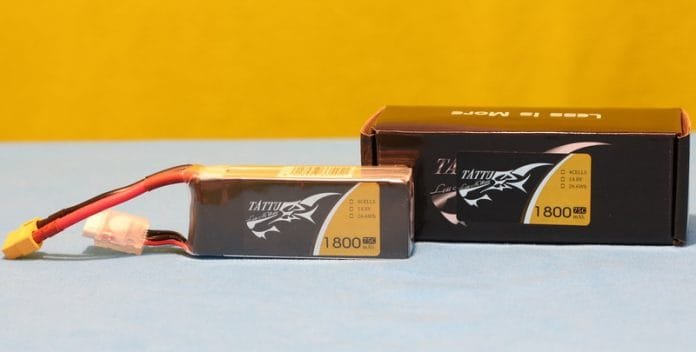
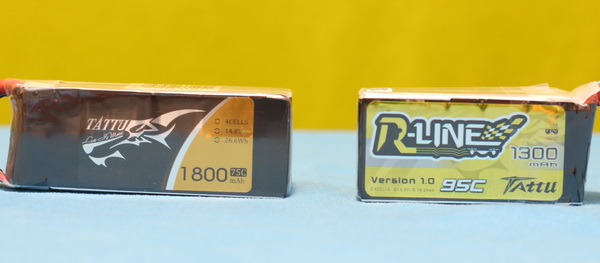

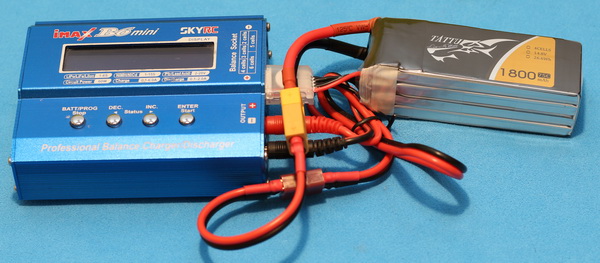
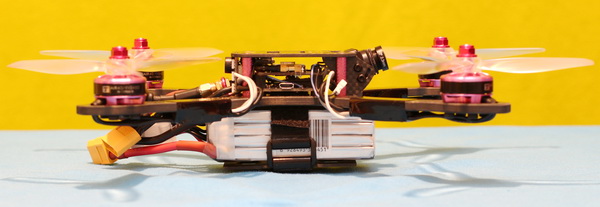
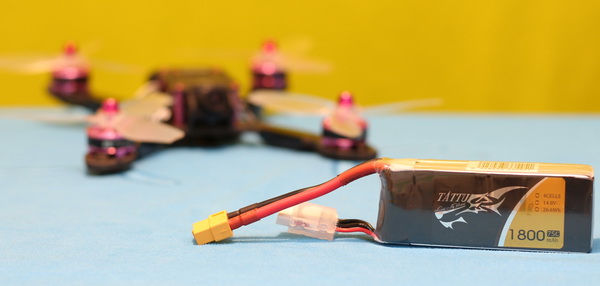
At what amperage are you guys charging 1800mah
batteries?
Usually I charge my batteries with 2C
Visitor Rating: 4 Stars
Visitor Rating: 4 Stars
What about the Lumenier 1800mah 4s 75c lipo battery? Which one is better?
sorry, we tested only the Tattu 1800. So we can’t you provide details about that Lumenier Li-Po
I has saw your video, but there have a small detail make me wonder that why you don’t discharge and charging the battery before you use it? (because i saw you take it directly from the case..it seems it’s a new battery…)
:) Of course that I fully charged the battery prior the test flight.
I’ve repackaged it to show how it comes from the from GensAce.
Charging at .5 amps isn’t very useful but interesting. Most people don’t realize it but balancing the cells generally is the largest x factor between packs. High charge rates causes more imbalance before the charger poles the cells. The impractical charge rate of 0.5 amps should limit that quite a bit. The mah/minute of your two times (8.22 for the 1300 and 8.18 for the 1800) shows that both packs were very similar in health.
Visitor Rating: 4 Stars
Visitor Rating: 5 Stars
“As I’m not a Pro racing pilot, I haven’t noticed significant performance dropping from 95C to 75C while flying at top speed.”
The maximum current that can be drained from the battery is the C rating times the capacity of the battery. Since 75 x 1800 > 95 x 1300, the 75C x 1800mAh battery is expected to perform better than the 95C x 1300mAh battery.
Suppose both batteries are loaded at just 1000mah. Which one will have more instant power, the one with 95C or 75C?. “C” ratting means instant power, capacity (like 1300mAh or 1800mAh) means how long you can fly.
‘C rating mean instant power’ is an over simplification, but holds true when the packs are the same size. It doesn’t hold true with mixed size batteries. C x mah (pack capacity) = available amps. The 1800 pack has more lithium molecules so it can release them faster regardless of how much is left in the pack. Its not exactly linear as the pack loses energy but fairly close.
No. The power is voltage x current. The voltage is the same for both batteries, the (maximum) current is C rating times capacity.
> “C” ratting means instant power, capacity (like 1300mAh or 1800mAh) means how long you can fly.
If you have
– Battery A : 3s 50C 1000mAh
– Battery B : 3s 100C 1000mAh
And you discharge them at full power, the battery A will be discharged in 1/50th of 1 hour delivering 50A, and the battery B will be discharged in 1/100th of 1 hour, delivering 100A.
I don’t agree, though 75 x 1800 > 95 x 1300, but 1800 mAh lipo si heavier than 1300 mAh lipo, so the drone need more power to take off.
Regarding the extra weight you have perfectly right!
My comment addresses the fact that Robert seems to imply that performance should be lower because the C rating is lower. I’m just saying that it’s not the whole story.
I think the performance is depends on your need, if you want a high C rate lipo battery for racing, this battery is not a good choice; but if you want flight longer for for FPV racing drone flight maneuvers, this one is better.
Yes, you are perfectly right
Visitor Rating: 3 Stars
Visitor Rating: 3 Stars
Visitor Rating: 4 Stars